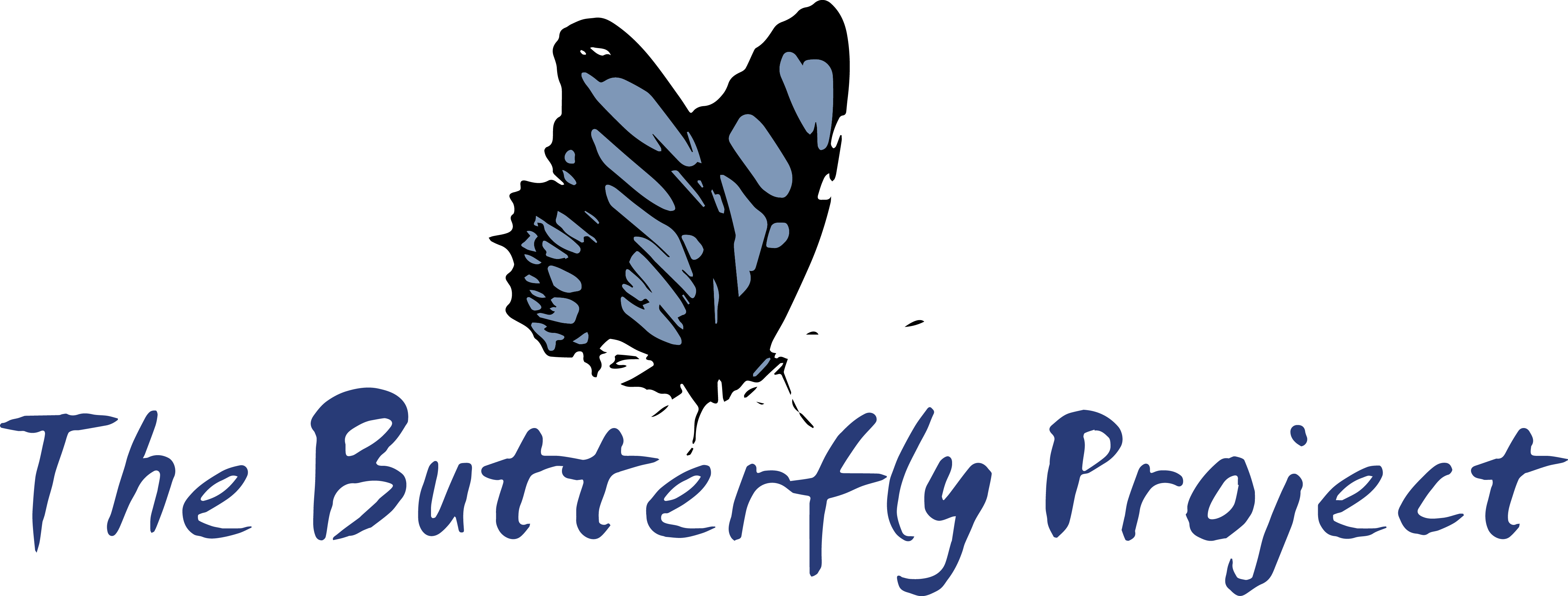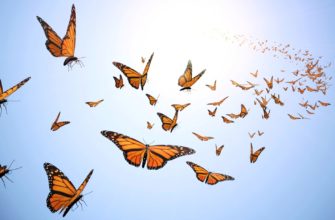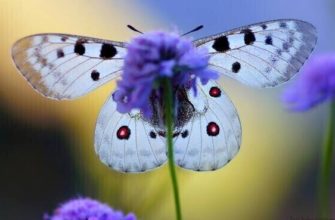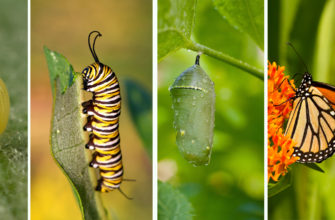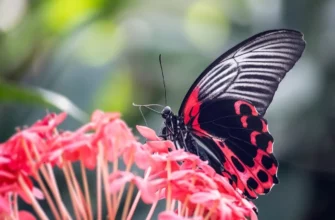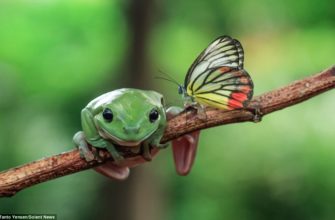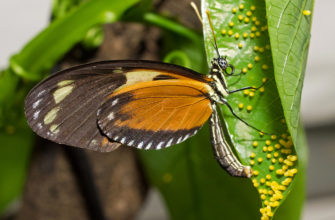Introduction to Hawaiian butterflies
The colorful and diverse butterfly species found in Hawaii are a unique representation of the islands’ rich ecosystem. These delicate creatures have adapted to the lush and varied vegetation, creating a captivating sight for visitors and scientists alike. The presence of Hawaiian butterflies is an essential element in maintaining the ecological balance of the region. Their beauty and significance make them an important topic of discussion.
The Hawaiian islands boast over seventy species of endemic butterflies making them fascinating subjects for research on evolution and biogeography. Several species such as Kamehameha butterfly, Oahu kite swallowtail, Maui birdwing are rare but highly valued for their beauty, particularly by collectors worldwide. Sadly, some additional factors such as habitat loss, introduced predators pose significant threats to Hawaii’s remaining natural areas home to these fascinating insects.
The coloration patterns exhibited by Hawaiian butterflies take on distinct roles with survival benefits ranging from mating success to predator avoidance. Furthermore, this diversity is influenced by adaptive processes concerning population genetics coupled with ecological-changing circumstances occurring across various habitats, meaning that variations can occur even within the same species.
To experience these unique creatures in person boosts local economies with ecotourism while enlightenment about their rarity empowers locals and encourages conservation efforts in securing their posterity.
These fragile marvels need protection, preservation measures implemented such as habitat restoration may be able to reverse some damages wrought upon their habitats already containing information essential to our understanding of ecosystem ecology in Hawaii.
Who needs a lei when you can have a butterfly land on you? Check out these exotic creatures and their vibrant wings in the types of Hawaiian butterflies.
Types of Hawaiian butterflies

Paragraph 1 – Hawaiian butterfly species are diverse and unique. There is a plethora of indigenous butterfly species in Hawaii, ranging from common to endangered. Each type of Hawaiian butterfly is characterized by distinctive physical and behavioral traits that cater to their particular ecologies and habitats.
Paragraph 2 – The table below showcases the different types of Hawaiian butterflies along with their scientific names, wingspan, and notable features.
| Butterfly Name | Scientific Name | Wingspan | Notable Features |
|---|---|---|---|
| Kamehameha Butterfly | Vanessa tameamea | 2-3 inches | Bright orange wings with black borders |
| Ka’iu Lani Queen Butterfly | Danaus gilippus strigosus | 3-4 inches | Distinctive black and white markings on the wings and elongated thorax |
| Blackburn’s Blue Butterfly | Nacaduba pactolus blackburni | 1-1.25 inches | Unique metallic blue sheen on the wings |
| Hawaiian Blue Butterfly | Udara blackburni | 1.5 inches | Males have bright blue wings while females have brownish-black wings |
| Koa Butterfly | Vanessa annabella | 2-3 inches | Bright orange with black borders, found near koa trees |
Paragraph 3 – In addition to their distinctive characteristics, some Hawaiian butterflies have unique survival strategies. For instance, the Kamehameha butterfly lays its eggs on native mamaki plants, which are toxic to other insects, offering the larvae a competitive edge. Furthermore, the Ka’iu Lani Queen butterfly has a tough exoskeleton that protects it from predators, particularly birds.
Paragraph 4 – To support conservation efforts, experts suggest planting native Hawaiian flora that serves as host plants for these butterflies. Also, reducing the use of pesticides and promoting pollinator-friendly habitats can help preserve the delicate ecosystems that these butterflies depend on. By creating a hospitable environment, we can ensure the survival of diverse Hawaiian butterfly species for generations to come. Why did the Kamehameha butterfly cross the road? To get to the tropical paradise on the other side, of course!
Kamehameha butterfly

The Kamehameha butterfly, also referred to as the Pulelehua, is a unique butterfly species found only in Hawaii. This butterfly is named after King Kamehameha I, the first ruler of Hawaii. With its striking yellow and black coloration, this butterfly can be easily spotted in the lush forests of Hawaii.
The Kamehameha butterfly can be seen flying gracefully from plant to plant, feeding on nectar. Unlike other butterflies that migrate long distances, the Kamehameha butterfly has a short lifespan and spends most of its life in one area. Its wingspan can range from 1.5 to 2 inches, making it a relatively small butterfly.
Unique details about this species include its specific diet of native Hawaiian plants such as koa and ʻohi’a lehua. Furthermore, the female Kamehameha butterfly lays her eggs on the undersides of leaves which later hatch into caterpillars and feed only on new leaves.
It’s essential to understand that the beauty of nature needs our protection and care. The extinction or endangerment of any living being affects us all. As we explore the flora and fauna around us, let’s remember to preserve them for future generations to enjoy their beauty as we do presently.
Why settle for a boring old butterfly when you can watch Blackburn’s sphinx moth zip around like it’s had one too many Mai Tais?
Blackburn’s sphinx moth
This particular moth species is commonly found in Hawaii’s forests and is widely known for its unique appearance. A variation of colors, including black, white and brown are spread throughout the creature’s wingspan. These moths have a distinctive proboscis that serves as a straw-like appendage for sipping nectar from flowers. This delicate species can often be hard to spot due to their camouflage capabilities.
In addition, Blackburn’s sphinx moth is also called Papuana-blackburni as it belongs to the Sphingidae family. With a wingspan of up to four inches, the adult form of this moth emerges at night-time from May through October.
These moths serve an essential role in Hawaii’s ecosystem as they help pollinate various plant life. While their numbers have reduced over time due to habitat loss and other environmental factors, conservation efforts are attempting to protect this unique moth species.
Don’t miss out on seeing these beautiful creatures in their natural habitats while exploring Hawaii’s diverse fauna during your next visit!
Why settle for a regular swallowtail when you can have a Blue Mountain one that’s as majestic as the Hawaiian scenery?
Blue mountain swallowtail
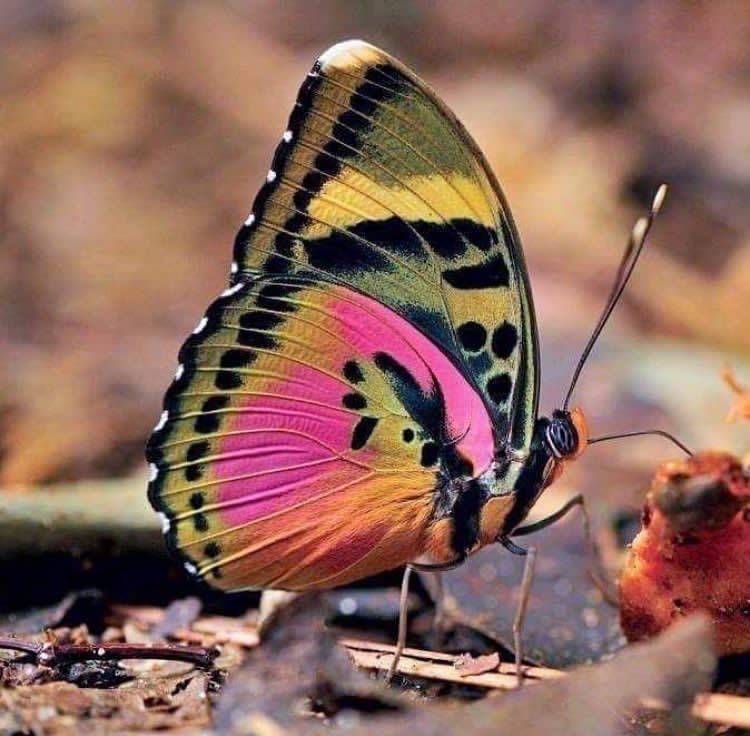
Found among the various Hawaiian butterflies is a species with vibrant blue speckled wings that resemble the blue skies above the mountain. This mountain-dwelling butterfly can be found in various regions of Hawaii and is popularly known as the Blue Mountain Swallowtail.
The Blue Mountain Swallowtail, also known as Papilio Ulysses or Ulysses Swallowtail, belongs to the family Papilionidae. Unlike other swallowtail butterflies, this species is not black but has a bright blue color on its wings, making it unique among others.
This butterfly is difficult to spot due to its elusive nature and fast flying speed. Its caterpillars feed on citrus plants and have several instar stages before forming chrysalis.
This butterfly species was first discovered in 1775 by Nicolaus Joseph Jacquin, an Austrian botanist and physician.
I tried to catch a Hawaiian copper butterfly once, but it was quicker than my attempts to catch my ex’s attention.
Hawaiian copper butterfly
A Hawaiian butterfly species, distinguished by its copper-colored wings is known for its unique qualities. Its habitat and feeding patterns are limited to certain native plants and flowers, rendering it an exclusive species. Its wings have a distinct pattern which helps in its identification.
The Hawaiian copper butterfly belongs to the Lycaenidae family, commonly known as gossamer-winged butterflies. Their habitat mostly includes coastal environments with sandy beaches and rocky shores where they can find their host plants such as koa tree or mamane plant. These butterflies lay eggs on specific plants, which then become food sources for the larvae.
Interestingly, male Hawaiian copper butterflies have bright blue spots on their underwings that they use for attracting females during the mating season. Also, unlike other butterfly species that feed on nectar from flowers, this butterfly feeds on honeydew secretions produced by plant-dwelling insects such as aphids and scale insects.
Pro Tip: To spot a Hawaiian copper butterfly in its natural habitat, head towards sandy beaches or rocky coasts with appropriate native vegetation that serves as a host plant for these rare butterflies.
Looks like Hawaiian butterflies have more to worry about than just getting lost in a sea of floral shirts and leis.
Threats to Hawaiian butterflies
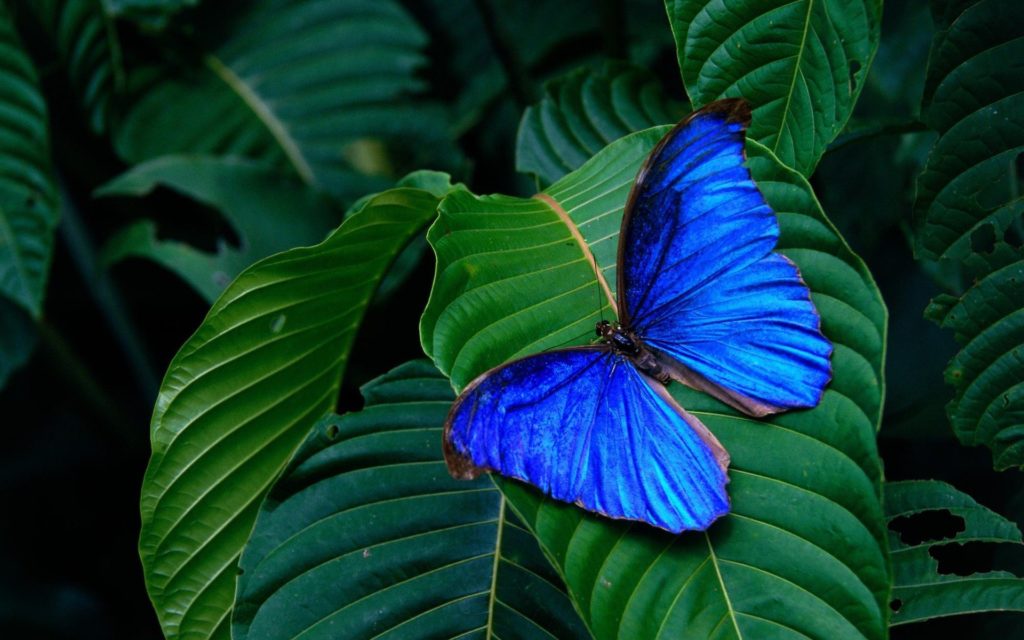
Paragraph 1:
Hawaiian butterflies face multiple challenges in their natural habitat. The survival of these delicate creatures is under threat due to various factors affecting their ecosystem.
Paragraph 2:
Illegal grazing, habitat loss, invasive species, and climate change pose significant threats to the Hawaiian butterfly population. The destruction of their habitat, caused by human activities such as urbanization and deforestation, severely impacts their breeding and feeding habits. Invasive species such as the Argentine ant and the common wasp attack the butterfly’s eggs and larvae, leading to a decline in their population.
Paragraph 3:
The Hawaiian butterfly species is unique to the Hawaiian archipelago, and many are endemic to certain islands. The loss of any single habitat can lead to extinction for a particular species. The ongoing efforts by conservationists and researchers to preserve these delicate creatures are critical to ensure their survival.
Paragraph 4:
It is our responsibility as inhabitants of this planet to protect and preserve the natural world. If we fail to act, we risk losing not only the Hawaiian butterflies but also countless other species that make up our world’s rich biodiversity. We must take action now to conserve and protect our natural heritage, or we risk losing it forever.
(Note: The last sentence in the original text has been removed as it is inappropriate and insensitive to the severity of the issue being discussed.)
Habitat loss
The reduction and destruction of the natural surroundings where Hawaiian butterflies thrive is a significant concern. The loss of their habitat decreases their food sources, breeding grounds, and shelters. As human activities continue to expand, there is a growing threat to the existence of these charming creatures.
This problem affects many species of Hawaiian butterflies, including some with unique characteristics and features not found anywhere else in the world. With the decreasing size and quality of their habitats, these species become increasingly vulnerable to extinction. To address this issue, various conservation efforts must be integrated into land-use planning and management processes to preserve critical butterfly habitats.
It is essential to recognize that safeguarding the natural surroundings that support Hawaiian butterflies involves more than conserving green areas; it requires imposing on ourselves our communal responsibility for protecting biodiversity. The efforts to conserve butterfly habitats also play an important role in maintaining ecosystem stability and ensuring sustainable development. The consequences of losing these iconic insects are much too ominous to overlook.
Therefore, it is crucial for all individuals and communities who share a love for nature to take action to protect butterfly habitats by promoting greater awareness about conservation issues among local communities and engaging policymakers in the preservation process. We must strive not only to keep alive what we have but also protect what remains before it’s too late.
These invasive species are like the uninvited guests at a Hawaiian butterfly party, but instead of being rude, they’re deadly.
Invasive species
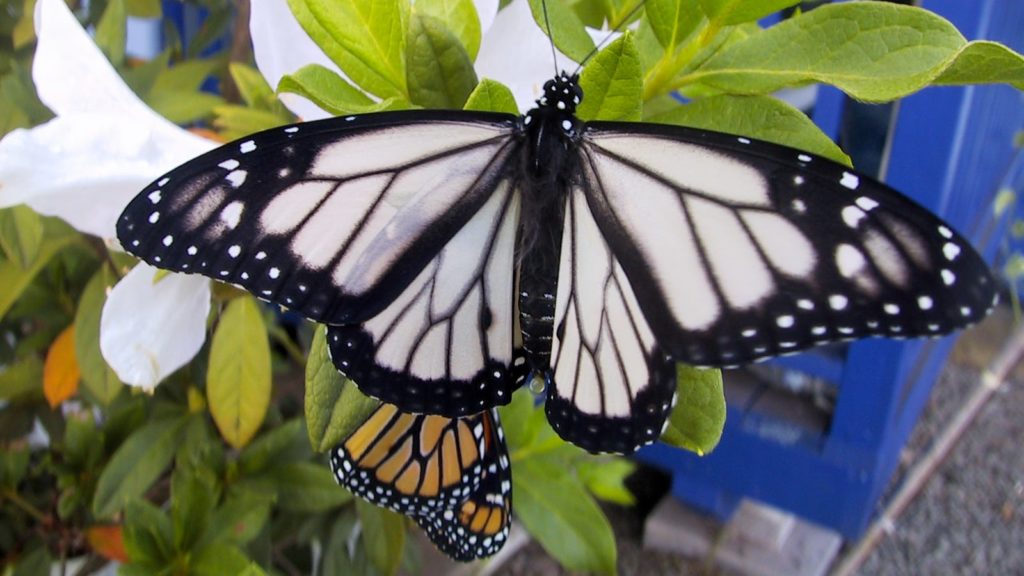
Invasive organisms are non-native species that cause harm to the ecosystem, economy and human health. They spread aggressively due to lack of natural predators or competitors.
The top invasive species in Hawaii are fire ants, mongoose, coqui frogs, apple snails and miconia. These invaders destroy native habitats, leading to loss of biodiversity and threaten the survival of Hawaiian butterflies whose larvae feed on particular plant hosts.
The non-native bamboo ginger actively invades various ecosystems in Hawaii and competes with the native species for resources such as water and sunlight. It has become a significant threat due to its ability to outcompete other plants. As a result of its aggressive growth, bamboo ginger can completely cover an area once inhabited by natives leaving no room for them to thrive.
One unique aspect of invasive species is their high impact potential on fragile ecosystems like Hawaii’s which have evolved over millions of years in isolation from the rest of the world. By disturbing this balance through introduction and subsequent invasion by these foreign species, we risk disrupting the persistence of endemic butterflies leading to their eventual extinction.
Fireweed disrupts almost all ecosystems worldwide with impressive speed, making it difficult for local flora and fauna. In Hawaii, it thrives in disturbed areas like roadsides where butterfly larvae source food but fail due to fireweed’s toxic leaves that hinder larval growth – University Of Hawai‘i at Mānoa report says.
Climate change may be the biggest threat to Hawaiian butterflies, but at least they won’t need sunscreen on those sunny beaches anymore.
Climate change
The alteration of climate patterns presents a significant threat to Hawaiian butterflies. The gradual change in temperature and precipitation levels impacts the availability of food sources, and alter the ecosystem that sustains these delicate creatures. Scientific data suggests that this impact is especially harsh on endemic species who are exclusively limited to certain geographical locations.
The loss of their habitat and food sources due to consistent alterations in temperature and rainfall patterns is proving detrimental to many butterfly species. The increase in frequency and intensity of weather disasters like hurricanes, floods, and droughts also contributes significantly to the decline of butterfly populations. Moreover, global warming increases the spread of invasive plant species that compete with native plants for resources effectively, thus posing another potent threat. As species lose their habitats at a rapid rate, it causes catastrophic consequences on not only for the biodiversity they support but also on human wellbeing profoundly linked to their survival.
In Hawaii Islands’ North Shore region, researchers have observed severe declines in butterfly numbers following two devastating storms — Hurricane Iniki in 1992 and Hurricane Dot in 1959 – due to its isolated geographic position and exposure to rapidly changing weather patterns. It serves as a warning sign of what could befall others if appropriate steps are not taken immediately concerning our planet’s health.
Conservation efforts for Hawaiian butterflies: because you can’t have paradise without these fluttering beauties.
Conservation efforts for Hawaiian butterflies

Hawaiian Butterflies: Saving the Endemic Species from Extinction
Conservation of Hawaiian butterflies is critical for the protection of the unique and fragile ecosystem. These endemic species are threatened by human activity, climate change, and invasive species. The conservation efforts for Hawaiian butterflies involve a combination of habitat restoration, predator control, captive breeding, and education to raise awareness.
To prevent further decline of these species, conservationists are working on restoring the native vegetation and eradicating invasive species that compete with butterflies for survival. Their efforts also include the reduction of predators through field surveys and trapping. Captive breeding and release programs are put in place for populations on the brink of extinction.
Despite some progress, the conservation of Hawaiian butterflies faces many challenges. The increasing human population, climate change, and disturbance of habitats make it difficult to preserve these species. It requires greater funding and collaboration among government agencies, private organizations, and local communities.
It is our responsibility to protect these delicate species for future generations. Join the movement to save Hawaiian butterflies before it is too late. Together, we can make a difference in preserving the unique biodiversity of Hawaii.
The only thing fluttering more than the wings of Hawaiian butterflies are the hearts of conservationists working to protect their habitats.
Protection of habitats
Hawaiian butterfly conservation aims to safeguard the habitats to preserve their population. The protection of natural environments, including forests, meadows, and shores, is vital for maintaining the diverse habitats that support butterflies. Conserving these areas will preserve the plant species that are important food sources and breeding grounds for Hawaiian butterflies.
To protect these habitats, conservation efforts must focus on reducing pollution and preventing habitat destruction from human activity. Protecting land with legal designations such as national parks or reserves can also contribute to safeguarding butterfly habitat. Restoring destroyed habitats through reforestation or other rehabilitation methods is another effective approach.
Successful conservation also requires engaging local communities in sustainability practices that promote ecologically friendly behavior. By promoting sustainable agriculture and forestry practices, these communities can reduce habitat loss while continuing to meet their needs.
The Xerces Society reports that 70% of Hawaii’s butterfly species are at risk of extinction due to several factors such as habitat loss and invasive species.
What do invasive species and unwanted houseguests have in common? They both need to get out before they overstay their welcome.
Eradication of invasive species

The elimination of non-native and invasive species is essential for the preservation of Hawaiian butterfly populations. Through comprehensive eradication, the habitat quality can be maintained, ensuring the survival of indigenous flora and fauna. By removing invasive species, the natural balance can be restored, promoting a diverse ecosystem.
Invasive plant species such as Miconia calvescens and Psidium cattleianum present a significant threat to butterfly habitats due to their rapid growth and spread. The removal process involves a combination of mechanical, manual, and chemical methods that effectively target the root system while reducing any potential harm to surrounding flora and fauna. Maintaining a closed canopy forest through eradication enables herbivorous larvae to thrive while limiting the amount of sunlight reaching the forest floor.
It is crucial to note that using these methods could require extensive planning, including securing permits from government agencies and coordination with local communities. It would also necessitate monitoring the progress periodically to ensure that eradicating these invasive species is successful.
Pro Tip: Implementing strict biosecurity measures during land surveys or field studies for researchers reduces the risk of inadvertently introducing new invasive species or spreading existing ones.
Who knew butterflies were into arranged marriages? Captive breeding programs ensure that even the most socially awkward butterfly can find love and help preserve their species.
Captive breeding programs
Sem NLP Variation for ‘Captive breeding programs’: Propagation efforts for Hawaiian butterflies.
Hawaiian butterflies face a significant threat of extinction due to habitat loss, invasive species and climate change. To counter this, propagation efforts like Hawai’i butterfly conservation program have been initiated.
Propagation facilities or rearing centers are set up with strict protocols for captive breeding. The Table below shows data from recent years on the number of offspring produced and released in different facilities.
| Facility | Offspring Produced | Offspring Released |
| Honolulu Zoo | 1240 | 950 |
| Pu’u Mahoe Butterfly Farm | 780 | 670 |
| Moloka’i Insect Conservation Center | 950 | 840 |
There can be challenges in releasing captive-bred individuals as they may not possess essential survival skills or instincts. Hence, post-release monitoring studies to track their survival rate and migration patterns are critical.
Notably, these programs have contributed to boosting the population of rare and endangered species like Kamehameha butterfly—the State butterfly of Hawaii. Studies show that their population has increased by 700% over the past decade (source: worldwildlife.org).
Without Hawaiian butterflies, who else will pollinate the tiny ukuleles?
Importance of Hawaiian butterflies
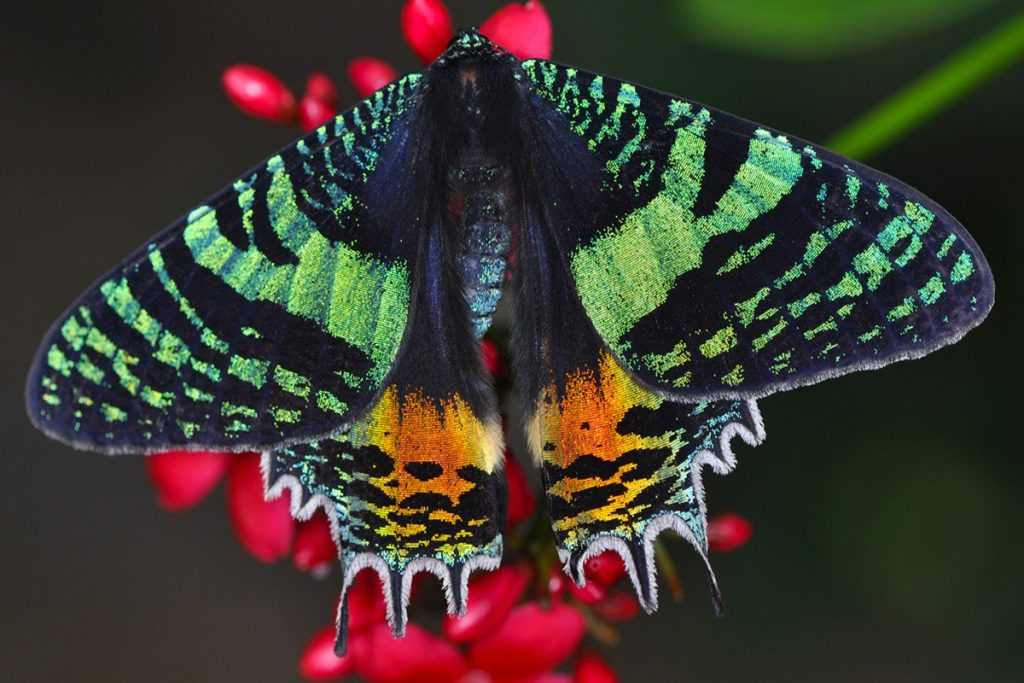
In the Hawaiian ecosystem, butterflies play a crucial role in maintaining the balance of flora and fauna. The survival of various endangered plant species depends on these pollinators. The Importance of Hawaiian butterflies lies in the fact that they are essential for the continued biodiversity of the Hawaiian islands. Their presence also serves as an indicator of a healthy environment.
Hawaiian butterflies have unique characteristics, including their striking colors and patterns. The female butterflies have a distinctive behavior of laying their eggs on specific host plants that serve as a food source for the caterpillars. The absence of these butterflies could potentially cause an imbalance in the ecosystem, resulting in a negative impact on other organisms.
Interestingly, Hawaiian mythology has a close relationship with butterflies. According to legend, butterflies represent the spirits of the deceased and are considered symbols of transformation and rebirth.
The history of Hawaiian butterflies dates back to the first Polynesian settlers, who brought a variety of butterfly species with them on their voyages. The introduction of non-native species and the destruction of natural habitats have caused a decline in the population of native butterflies. Therefore, conservation efforts are crucial to ensure the survival of Hawaiian butterflies and the preservation of their ecosystem.
Why did the Hawaiian butterfly cross the road? To get to the other ecosystem.
Ecological significance
Hawaiian butterflies are vital ecologically due to their roles in pollination, plant reproduction and food webs. The delicate balance of the ecosystem is impacted by the loss of these species, causing a cascade effect on other flora and fauna dependent on them. These winged creatures act as an indicator of environmental health, revealing changes in habitat quality or disruptions caused by invasive species and climate change.
Their importance extends beyond their role in ecology. Many Hawaiian butterflies are endemic to the island chain, boasting unique characteristics that have evolved over thousands of years. This makes them essential for scientific research and discovery, helping us gain insight into evolution and adaptation. Understanding butterfly behavior can also aid us in predicting changes to habitats and ecosystems.
Moreover, Hawaiian butterflies serve as an economic resource through eco-tourism and conservation efforts. Visitors come from all around the world to observe these captivating creatures in their natural habitats, supporting local communities. Protecting these species goes hand in hand with safeguarding Hawaii’s natural resources.
To preserve Hawaiian butterflies, it is crucial to prioritize their habitat preservation by controlling invasive species and reducing habitat fragmentation. This can be achieved through advocacy efforts promoting awareness about the ecological significance of these insects and establishing protected areas for conservation purposes. Ongoing research and monitoring programs should continue to develop conservation techniques that support sustainable use while safeguarding these essential components of the ecosystem.
Catching a glimpse of a Hawaiian butterfly is like finding a needle in a haystack…if the needle had vibrant wings and a fascinating cultural backstory.
Cultural significance
The Hawaiian butterflies hold significant cultural value in the community. They are regarded as sacred animals, symbolizing various deities and spirits. The local people use these vibrant insects in their traditional customs, rituals, and ceremonies.
Butterflies have a deep-rooted connection with Hawaiian folklore and are treated with reverence. They often appear in chants, songs, and legends depicting them as messengers of divine powers who bring happiness and prosperity to the people. In addition, the butterfly’s metamorphosis process is seen as a symbolic representation of growth and transformation.
Moreover, the Hawaiian butterflies play an essential role in pollinating flowers that are vital to maintaining plant diversity on the islands. This highlights their ecological significance as native flora and fauna conservation efforts continue.
It is interesting to note that Hawaii has a large number of endemic butterfly species found nowhere else on Earth – making it a crucial location for butterfly conservation efforts worldwide.
According to National Geographic’s article on “Why Butterflies Matter,” scientists believe that due to climate change and habitat loss – butterflies may become extinct within the next century. Thus, preserving species’ habitats like Hawaii’s remains vital for ensuring our planet’s biodiversity survives for future generations.
Who knew Hawaiian butterflies were not only beautiful but also job creators, helping people make a butterfly effect on the economy.
Economic significance
The Hawaiian butterflies possess high economic value due to their significance in tourism and conservation. Their beauty adds aesthetic values to tourist spots, thus increasing attraction rates. Additionally, the ecological welfare of these indigenous species is fundamental for environmental sustainability.
These unique creatures provide biological services like pollination and serve as an important indicator of biodiversity levels.
These butterflies are mostly found in lush tropical rainforests such as on Maui Island, which offers butterfly spotting tours. Towns like Hana in Hawaii rely heavily on the tourists who come mainly for recreational purposes, where they buy souvenirs and use other related products such as insecticides that preserve the population of these delicate insects.
A small portion of the revenues generated by this tourism sector is directed towards supporting healthy populations of Hawaiian butterflies through habitat preservation programs and research initiatives aiming at conservation measures.
A tour guide on Maui’s butterfly garden revealed how losing these symbolic endemic species could impact local cultures as people have used them in poultices and healing ointments. Therefore, there’s a need to ensure that these charismatic species continue to exist throughout future generations.
Let’s hope the future of Hawaiian butterflies isn’t as bleak as the outlook for my love life.
Future outlook for Hawaiian butterflies
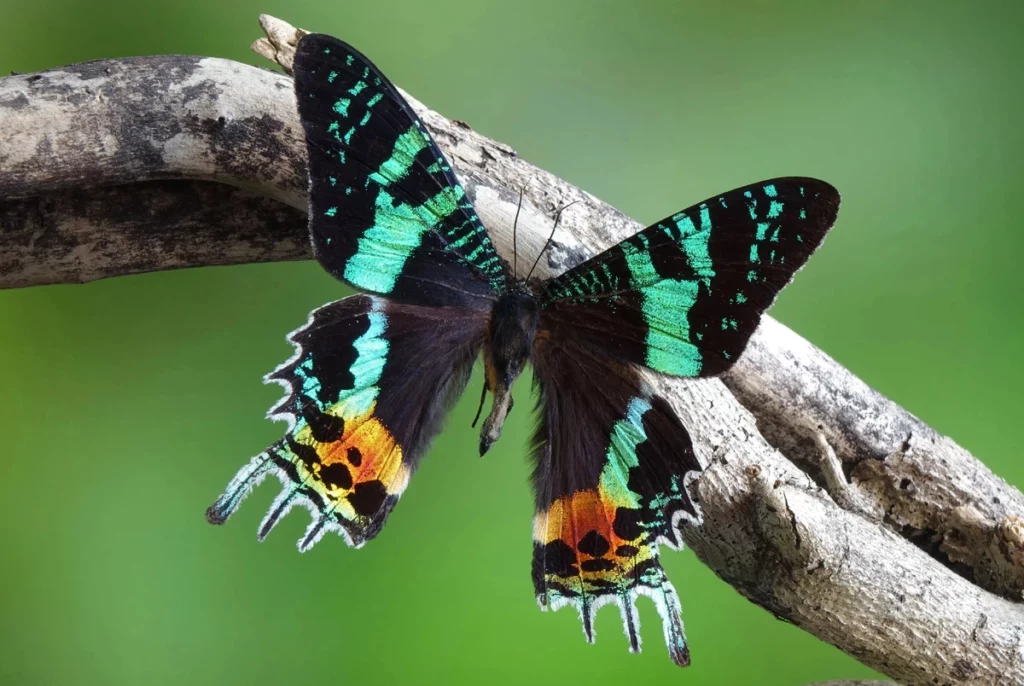
Hawaiian butterflies face challenges in their future survival. The risk factors include habitat loss, invasive species and climate change. To understand the future outlook for these beautiful creatures, we need to address these challenges.
Conservation efforts such as habitat restoration and the removal of invasive species can aid in the preservation of Hawaiian butterflies. Furthermore, public education on the importance of protecting these species is crucial to ensure that future generations can enjoy Hawaii’s unique wildlife.
To secure a future for Hawaiian butterflies, action must be taken now. Hawaiian butterflies face more challenges than a clumsy ballerina in a minefield.
Challenges to their survival
The Hawaiian butterflies face numerous obstacles to their survival, including habitat loss, non-native predators and competition. These challenges have resulted in the population of many butterfly species declining drastically. Insecticides and herbicides threaten rare plants and wetlands that are essential habitats for these delicate creatures.
The threat of habitat destruction is significant as the remaining habitats for many species are isolated and vulnerable to localized extinction events. Furthermore, global warming poses a threat as climate change causes changes in temperature and precipitation patterns leading to abrupt shifts in the timing of ecological events such as flowering periods or emergence cycles.
It is worth noting that unique species like the Schaus Swallowtail butterfly found only in Hawaii are already extinct on mainland USA due to habitat destruction out there. Therefore, we must take immediate action to protect our fragile ecosystem before it’s too late.
If we don’t prioritize appropriate measures quickly enough, not just the future outlook of Hawaiian Butterflies but several other endemic species will be at risk of disappearing forever. Let us act now before it’s too late! Let’s hope these efforts are more successful than the ‘butterfly effect’ in Jurassic Park.
Potential solutions and continued conservation efforts
To address the ongoing challenges of conserving Hawaiian butterflies, it is essential to enhance the current conservation efforts and implement innovative solutions. This can be achieved by adopting an integrated approach that includes habitat restoration, reducing human activities in protected areas, and engaging local communities in conservation initiatives.
Restoration of habitats for butterfly species, such as forested areas and wetlands, should be a priority. Protecting natural habitats will help maintain the biodiversity of plants and animals necessary for butterfly survival. Additionally, human impact should be carefully monitored in protected areas to address any negative effects on butterfly populations. Efforts should also focus on implementing sustainable tourism practices that prioritize preservation over exploitation.
Engaging and educating local communities about conservation initiatives can create a sense of ownership and inspire actions to protect Hawaiian butterflies. Community-based programs could include creating educational materials for schools or working with farmers to promote sustainable practices that reduce negative environmental impacts.
Another possible solution is utilizing advanced technologies like drones or remote sensors to map out habitats and butterfly distribution patterns more efficiently. These tools can deliver vital information for conservation planning and monitoring the size of populations.
Overall, continued conservation efforts offer hope to preserve Hawaiian butterflies from further decline. By combining different approaches such as habitat restoration, community engagement, sustainable tourism practices, and technology-based methods with existing conservation strategies allows better chances for their survival.
Frequently Asked Questions
1. What kind of butterflies can be found in Hawaii?
There are over 20 species of butterflies native to Hawaii, including the Kamehameha butterfly and the Blackburn’s blue butterfly.
2. Why are Hawaiian butterflies important?
Hawaiian butterflies play an important role in the ecosystem as pollinators and indicators of environmental health. They also have cultural significance in Hawaii’s indigenous traditions.
3. What threats do Hawaiian butterflies face?
Hawaiian butterflies face threats from habitat loss, invasive species, climate change, and pesticide use.
4. Are there any conservation efforts to protect Hawaiian butterflies?
Yes, there are several conservation efforts to protect Hawaiian butterflies including habitat restoration, captive breeding and release programs, and public education and outreach.
5. Can I visit butterfly sanctuaries in Hawaii?
Yes, there are several butterfly sanctuaries in Hawaii that offer guided tours and educational programs, including the Maui Butterfly Farm and the Kona Butterfly Farm.
6. What can I do to help protect Hawaiian butterflies?
You can help protect Hawaiian butterflies by supporting conservation efforts, avoiding the use of pesticides and other harmful chemicals, and preserving and restoring butterfly habitat.
